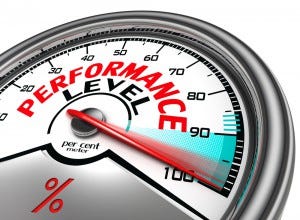What is a Performance Task? (Part 1)
Prof/ Walid El-Gohary
English Supervisor
A performance task is any learning activity or assessment that asks students to perform to demonstrate their knowledge, understanding and proficiency. Performance tasks yield a tangible product and/or performance that serve as evidence of learning. Unlike a selected-response item (e.g., multiple-choice or matching) that asks students to select from given alternatives, a performance task presents a situation that calls for learners to apply their learning in context.
Performance tasks are routinely used in certain disciplines, such as visual and performing arts, physical education, and career-technology where performance is the natural focus of instruction. However, such tasks can (and should) be used in every subject area and at all grade levels.
Characteristics of Performance Tasks
While any performance by a learner might be considered a performance task (e.g., tying a shoe or drawing a picture), it is useful to distinguish between the application of specific and discrete skills (e.g., dribbling a basketball) from genuine performance in context (e.g., playing the game of basketball in which dribbling is one of many applied skills). Thus, when I use the term performance tasks, I am referring to more complex and authentic performances.
Here are seven general characteristics of performance tasks:
1. Performance tasks call for the application of knowledge and skills, not just recall or recognition.
In other words, the learner must actually use their learning to perform. These tasks typically yield a tangible product (e.g., graphic display, blog post) or performance (e.g., oral presentation, debate) that serve as evidence of their understanding and proficiency.
2. Performance tasks are open-ended and typically do not yield a single, correct answer.
Unlike selected- or brief constructed- response items that seek a “right” answer, performance tasks are open-ended. Thus, there can be different responses to the task that still meet success criteria. These tasks are also open in terms of process; i.e., there is typically not a single way of accomplishing the task.
3. Performance tasks establish novel and authentic contexts for performance.
These tasks present realistic conditions and constraints for students to navigate. For example, a mathematics task would present students with a never-before-seen problem that cannot be solved by simply “plugging in” numbers into a memorized algorithm. In an authentic task, students need to consider goals, audience, obstacles, and options to achieve a successful product or performance. Authentic tasks have a side benefit — they convey purpose and relevance to students, helping learners see a reason for putting forth effort in preparing for them.
4. Performance tasks provide evidence of understanding via transfer.
Understanding is revealed when students can transfer their learning to new and “messy” situations. Note that not all performances require transfer. For example, playing a musical instrument by following the notes or conducting a step-by-step science lab require minimal transfer. In contrast, rich performance tasks are open-ended and call “higher-order thinking” and the thoughtful application of knowledge and skills in context, rather than a scripted or formulaic performance.
5. Performance tasks are multi-faceted.
Unlike traditional test “items” that typically assess a single skill or fact, performance tasks are more complex. They involve multiple steps and thus can be used to assess several standards or outcomes.
6. Performance tasks can integrate two or more subjects as well as 21st century skills.
In the wider world beyond the school, most issues and problems do not present themselves neatly within subject area “silos.” While performance tasks can certainly be content-specific (e.g., mathematics, science, social studies), they also provide a vehicle for integrating two or more subjects and/or weaving in 21st century skills and Habits of Mind. One natural way of integrating subjects is to include a reading, research, and/or communication component (e.g., writing, graphics, oral or technology presentation) to tasks in content areas like social studies, science, health, business, health/physical education. Such tasks encourage students to see meaningful learning as integrated, rather than something that occurs in isolated subjects and segments.
7. Performances on open-ended tasks are evaluated with established criteria and rubrics.
Since these tasks do not yield a single answer, student products and performances should be judged against appropriate criteria aligned to the goals being assessed. Clearly defined and aligned criteria enable defensible, judgment-based evaluation. More detailed scoring rubrics, based on criteria, are used to profile varying levels of understanding and proficiency.

